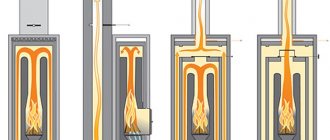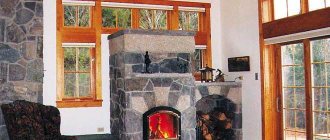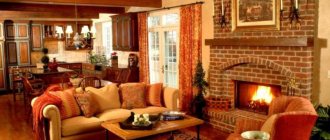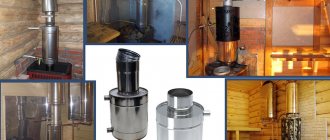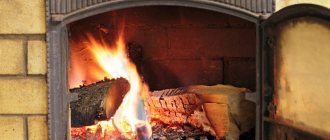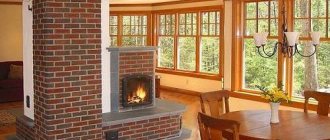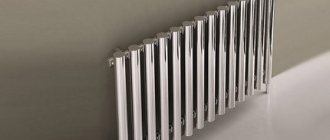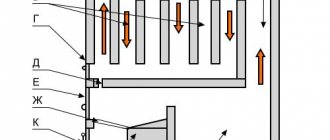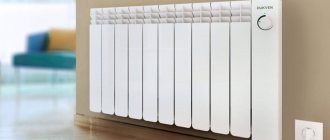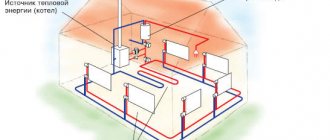Sweden, Denmark, Norway and Finland - the name of any of these Scandinavian countries primarily evokes natural beauty: majestic glaciers and picturesque fjords, clear lakes and vast forests. The caring attitude of Northern Europeans towards this heritage is quite logically reflected in all areas of their activities.
The fireplace Contura 21 C (Contura, Sweden) in concrete with two containers for firewood is a striking example of Scandinavian design with its clean straight lines, minimal decor and emphasized functionality. A steel firebox i20 with fireclay lining was used, the vertically opening door is made of cast iron.
Steel fireplace stove Q-bic (Rais, Denmark) with a built-in hinged base and a firewood rack in the lower part.
The Jasa fireplace (Tulikivi, Finland) with a ceramic finish will fit into both modern and classic interiors. Ceramic 3D cladding decorates its surface, and large doors effectively frame the beauty of the fire. The fireplace has low emissions; combustion air is supplied from outside. The model is perfect for installation in a modern home with low energy consumption.
What is the difference between Finnish home heating and Russian
Russian heating is arranged as follows: a stove or boiler is installed, which can use gas, coal or firewood as fuel. From the boiler, a circuit of a water “jacket” is laid throughout the house - a pipeline in which there is water without circulation. It heats up and releases heat into the room.
Important! There are also wood-burning stoves that distribute heat throughout the room by convection, but “Russian” designs are built from brick or stone.
The Finnish home stove has the following fundamental differences from domestic designs:
- There is no water jacket; it is not required due to the specific method of heat distribution. But some designs have it as an additional element.
- Heat is distributed throughout the house by airborne thermal convection.
- They are made only from cast iron or other heat-conducting metal, which is resistant to heat, but also heats up quickly. The design can be equipped with an insert made of heat-resistant glass.
- Only wood is used as fuel.
Important! The presence of glass adds aesthetic properties to the stove, since combustion and flames can be observed through it.
About the domestic manufacturer
The question is quite logical: how are Russian goods inferior and are they inferior?
The main advantage of Russian wood-burning stoves is their relative affordability. However, domestic heat generators are inferior in build quality. Manufacturers in Finland have made enormous efforts to improve efficiency and have achieved success. The design is such that heat transfer is increased to the highest levels. For example, combustion products enter the chimney already cooled.
On the other hand, fireboxes from domestic manufacturers are surprisingly unpretentious and perform their function under any conditions. Overseas equipment requires more attention and compliance with the rules of use.
Characteristics of the Finnish stove
The product is made of metal structures and serves for space heating, so it has a number of functional characteristics:
- Power. This parameter is characterized by the amount of heat, measured in Joules and generated from fuel combustion. The ideal parameter is considered to be 12 Joules from the combustion of 1 kg of wood in 1 hour. This value is close to 4 kW/hour.
- Keep warm time. Fuel is added to the firebox once every 10 hours, but there are models with volcanic ceramic lining. Such models require fuel renewal once every 22-24 hours.
- Size. It is not the dimensions of the stove itself that are important, but the firebox itself. Sizes vary from 12 to 50 cm.
Important! Finks can be used not only for heating, but also for cooking. A thin hob is installed in the upper part.
Warmth the Scandinavian way
Residents of northern countries know all about the cold and how important warmth is for a comfortable life. That is why fireplaces and stoves from Sweden, Norway, Finland and Denmark are highly efficient; they are often equipped with heat-storage blocks, and also include elements made of natural stone or heat-storage concrete in the design. A rational approach is embodied in efficiency: there is a constant struggle to reduce the amount of wood burned and maximize the useful use of thermal energy. Not a kilowatt wasted!
The free-standing biofireplace Globe (Vauni, Sweden) is a stylish design element of the interior, a model of a unique design. It can be rotated 360°. Thanks to the innovative burner design, the fireplace does not emit smoke or odor during operation.
Elegant wood-burning model Viva L 120 (Rais, Denmark) in a steel case, lined with fireproof chamotte. Watching the flames is easy and pleasant - through the panoramic front and two side windows.
Compact model Contura 610G (Contura, Sweden) with built-in firewood. The stove can be supplemented with a heat storage unit.
Operating principle of heating stoves
As already mentioned, first firewood is placed in the stove and lit. The firebox is closed with a lining, and the wood begins to burn and the lining begins to heat up.
The air heats up from the lining, and then a physical phenomenon called convection begins. This is the specific ability of air masses to move, circulating around the room and displacing cold air masses. The movement occurs unnoticed by humans, and the room is gently filled with warmth.
Important! Some models are equipped with a water pipe for radiators. Their principle is to combine convection with heating water in pipes, which also heat the room.
Selection rules
Basic recommendations from professionals:
- You should carefully read the instruction manual, which indicates the preferred heating area, and also describes in detail the situations in which the use of such a unit is not recommended.
- The presence of additional functions (hob, water heating tank, etc.) determines the advantages of a particular model.
- An important factor in choosing a device is the duration of operation after one fill of fuel.
What types of Finnish heating stoves are there?
There are several varieties and modifications that differ in design, the presence of additional elements and communications. The most popular versions of Scandinavian stoves for home heating will be presented below.
Long burning versions
Prolonged combustion of fuel is achieved by reducing the amount of oxygen inside the combustion chamber. For such structures, a blower is used, which is significantly smaller in volume than the firebox. In this case, the air in the firebox will quickly burn out, preventing strong combustion - the firewood will burn 1.2 - 1.5 times longer than in stoves with chambers of equal volume.
Features of the Scandinavian style
The traditional Scandinavian style, so popular in recent years, was formed under the influence of difficult weather conditions: cold climate and lack of daylight in the house. It also reflected the main character traits of the people who inhabited the north of Europe: restraint, taciturnity, a rational approach to everything. Therefore, the main features of the Scandinavian style in the interior are many light shades, a minimum of decor, high-quality, reliable and comfortable furniture, which may serve more than one generation of the family. The main colors are white, light gray, blue, beige. Natural materials are actively used: wood of various types and stone.
The elegant fireplace stove Contura 596 (Contura, Sweden) with a panoramic cast-iron door and small side windows is equipped with a highly efficient fuel combustion system.
Three-sided fireplace insert Unico 13 (Lotus, Denmark) made of thick steel, lined with vermiculite. A convection casing is built into its body to blow air from the room and cool the inner body, which allows the fireboxes to be integrated into a limited space.
The Scan 85-2 fireplace stove (Scan, Denmark) is designed to heat rooms up to 160 m². It is available in different color options for the cladding, so it will not be difficult to choose the model that best fits into a specific interior.
Safety of Finnish fireplaces
The main distinguishing feature of Finnish wood-burning stoves for the home is their safety. It is achieved by completely isolating the fire from the external space behind the stove. Air saturation through the ash pan is carried out through insulated channels, and the chimney hermetically removes combustion products outside the living quarters.
In addition, the design is a solid metal form that is resistant to mechanical stress and destruction from heat. Brick stoves, for example, can burn out over time and collapse from the heat if laid incorrectly, while Finnish stoves are purchased and installed in a monolithic design.
Advantages and disadvantages
During the operation of any heating devices, their strengths and weaknesses appear. Furnaces from Finnish manufacturers are no exception. Let us first consider the advantages of such devices:
- high quality and excellent functionality of the design;
- humidity is maintained at the proper level;
- use of environmentally friendly fuel;
- increased heat production.
The disadvantages of Finnish stoves for the home include the following:
- heating of the room occurs slowly;
- foundation construction required;
- high price.
Device
The main task of a home stove is to accumulate heat and release it slowly over half a day or a day. Therefore, making a good sauna stove is not so easy. Let us remember that they started heating the Russian bathhouse stove earlier. In order for the stove to quickly heat the room, it should ideally be made of metal, since a better heat-conducting material than metal cannot be found (see article “Do-it-yourself iron stove for a bath - knowledge is power”). We remind you that brick itself is a heat insulator. It heats up slowly and releases heat slowly. Therefore, in many designs of sauna stoves, space is provided in their body for cast iron or steel blanks.
Of course, when building a sauna stove, it is necessary to provide for heating the water. Thus, Finnish sauna stoves even at the stage of thinking and design turn into a rather complex heating device. Due to the fact that a certain number of people cannot do without bathing procedures, simple washing has turned into a ritual, which entrepreneurs have slowly but surely turned into business.
Since there is a wide range of Finnish sauna stoves on the market, the question arises, how to choose a stove for a bath or sauna? Having reviewed the appearance, price tags and design features, the dry steam lover comes to the conclusion that “for that kind of money!” You can also make Finnish sauna stoves yourself. There will also be funds left over for small expenses.
Fuel gas flow diagram
The figure shows the movement of flue gases in a metal furnace. Finnish wood-burning metal stoves themselves do not differ in any design features. If you have electric welding skills, making such a sauna stove is no problem. It should be taken into account that low carbon metal will burn out over time. Therefore, the wall thickness must be at least 3 mm. It is even better to line the firebox with refractory bricks. People's lives depend on the quality of welds. When the furnace is fired, carbon does not burn completely and forms carbon monoxide CO. Carbon monoxide forms a strong compound with hemoglobin in the blood, thereby blocking the transport of oxygen in the body. Carbon monoxide is deadly.
+7(343)361-27-66
Is a stove a heating device or a decoration?
DKMK plant specialists can install a store-bought stove or fireplace in a house we built, but we have the best solution for you!
Stoves and fireplaces are now used not only by hereditary residents of villages, but also by city dwellers who have acquired cottages outside the city. They want warmth and comfort in their home.
In this case, a fireplace or stove solves a practical and decorative problem. Along with the staircase, the stove is one element of the home that can both give a home a chic look and be an extremely functional element.
In the suburbs of Yekaterinburg there are many houses and cottages with interiors decorated with excellent products of stove art. Buying a beautiful decorative stove or fireplace is quite easy these days: there are hundreds of examples of metal stoves with beautiful finishes on the market.
Moreover, for those for whom the fireplace serves mainly as decoration and entertainment for guests, and it will be turned on once or twice a year, the optimal choice is an electric fireplace - it does not need a pipe, it does not smoke, and it looks just great, and the base is under it doesn't need anything massive.
But if the stove should not only be a decoration, but will work every day during the cold season, its optimal design should be different. And the best material for this is special refractory brick. The right stove will delight home owners for decades. In our company you can find a stove maker with extensive experience, a master in the construction of brick stoves, fireplaces and barbecues.
He has already built dozens of custom-made stoves for residents of Yekaterinburg or the Sverdlovsk region, and he will be happy to make a stove for you with his own hands!
Thermal characteristics of furnaces.
Recently, interest in metal fireplaces has increased.
